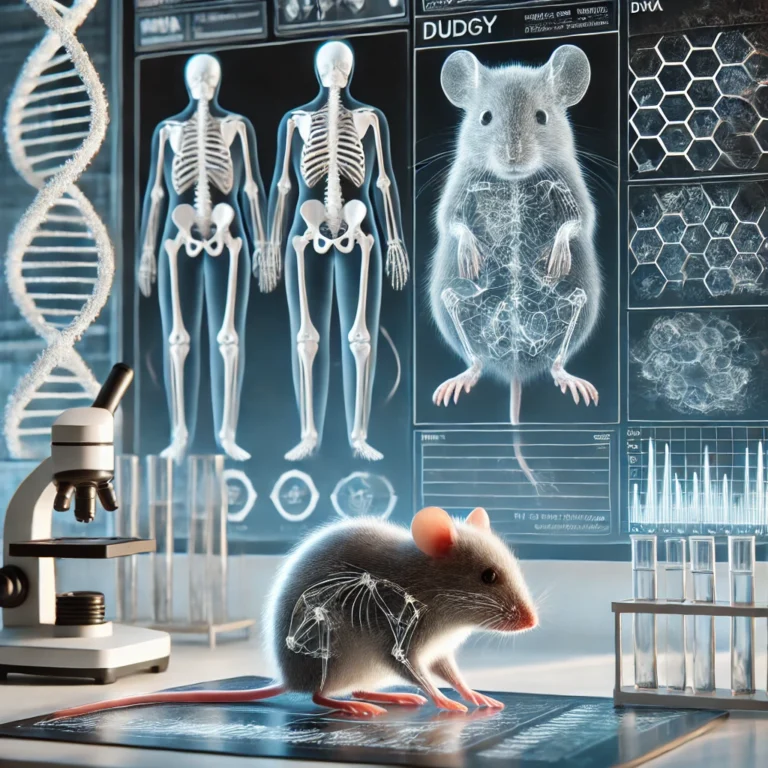
Introduction:
Gene transcription is a fundamental process that converts genetic information from DNA into RNA, which is then used to synthesize proteins that drive cellular functions. While stable messenger RNA (mRNA) has long been the focus of research, emerging studies have revealed the significant role of non-coding RNAs, particularly upstream antisense RNAs (uaRNA), in regulating gene expression. These short-lived RNA molecules are transcribed in the opposite direction of coding genes and play a crucial role in fine-tuning transcription.
A critical player in the regulation of uaRNA is the RNA exosome, a multi-protein complex known for its involvement in RNA surveillance and degradation. Recent findings suggest that the exosome helps maintain the balance of transcription by degrading unwanted uaRNA, preventing these non-coding transcripts from interfering with cellular processes. Additionally, research has revealed the importance of RNAPII pausing in regulating the transcription of both coding and non-coding RNA, providing further insights into the complexity of transcriptional control.
In this blog, we will explore how the exosome interacts with uaRNA and how RNAPII pausing contributes to the regulation of gene transcription, providing a deeper understanding of these key mechanisms in molecular biology.
Understanding uaRNA: What Are They and Why Are They Important?
Upstream antisense RNA (uaRNA) refers to RNA molecules that are transcribed in the opposite direction of the coding gene sequence. Unlike mRNA, which serves as a template for protein production, uaRNAs are non-coding and do not contribute directly to protein synthesis. However, they have an essential role in regulating gene expression. These RNA molecules are typically short-lived, unstable, and quickly degraded by cellular mechanisms if not properly regulated.
Despite their transient nature, uaRNAs play an important role in gene regulation. Their presence can influence the transcription of mRNA from gene promoters, making them key players in maintaining the balance of transcription. Disruptions in uaRNA regulation can lead to problems such as improper gene expression, which could contribute to diseases like cancer or genetic disorders. Therefore, understanding how uaRNAs are regulated is critical for comprehending the intricate systems that control gene activity.
The Exosome: A Key Player in Regulating uaRNA Stability
The RNA exosome is a crucial component of cellular RNA surveillance systems. It is primarily responsible for degrading defective, unprocessed, or unnecessary RNA molecules, thus preventing the accumulation of potentially harmful transcripts. While the exosome has long been known for its role in RNA degradation, recent studies have illuminated its involvement in regulating uaRNA stability.
A significant breakthrough in this area came from experiments targeting Exosc5, a subunit of the RNA exosome, through shRNA-lentiviral delivery. In these experiments, depletion of Exosc5 led to a marked increase in uaRNA levels—up to 2.5 to 3.5 times higher than in control cells. This result indicates that the exosome actively participates in the degradation of uaRNA, ensuring that these short-lived RNA molecules do not accumulate and disrupt normal cellular processes.
In addition to regulating uaRNA levels, the exosome also ensures that these molecules are appropriately processed and degraded. Without the exosome’s regulatory function, cells might experience an overload of unstable transcripts, potentially leading to errors in transcription and gene expression.
RNAPII Pausing: How Transcriptional Control Is Fine-Tuned
Another essential aspect of transcriptional regulation is the pausing of RNA polymerase II (RNAPII). RNAPII is the enzyme responsible for transcribing most genes, but its activity is often temporarily halted at specific sites known as promoter-proximal regions. This pause serves as a checkpoint, allowing the cell to regulate transcription initiation before the enzyme continues elongating the RNA strand.
Research has shown that this pausing is controlled by factors like NELF (Negative Elongation Factor) and DSIF (DRB Sensitivity-Inducing Factor), which help regulate the activity of RNAPII during the transcription process. These factors are involved in controlling RNAPII’s transition from initiation to elongation, ensuring that transcription occurs at the right time and in the right direction.
Recent studies have demonstrated that RNAPII pausing plays a key role in regulating uaRNA transcription. By analyzing ChIP-seq profiles of RNAPII and its associated pausing factors in cells, researchers found that the peaks of RNAPII and pausing factors directly overlapped with regions where uaRNA are transcribed. This overlap supports the idea that RNAPII pausing is involved in regulating transcription in both the sense (coding) and antisense (uaRNA) directions.
The Interaction Between RNAPII Pausing and Exosome-Mediated Degradation of uaRNA
The regulation of uaRNA transcription is not solely dependent on RNAPII pausing; it is also tightly coupled to RNA degradation pathways. When RNAPII initiates transcription in the antisense direction, it produces uaRNA that is quickly recognized by the exosome for degradation. This ensures that the transcription of non-coding RNA is kept in check and that only the necessary RNA molecules are allowed to persist.
In experiments where RNAPII pausing factors like NELF-A and Supt4h were knocked down, researchers observed significant increases in both uaRNA and spliced mRNA levels. This suggests that the regulation of transcriptional pausing also influences the stability of uaRNA. In the absence of proper pausing regulation, there is a marked increase in transcriptional noise, leading to the accumulation of both uaRNA and mRNA.
These findings underscore the interplay between RNAPII pausing and exosome-mediated degradation in controlling transcriptional output. Proper regulation of both processes is essential for maintaining cellular homeostasis and ensuring that gene expression is carried out precisely.
Conclusion: The Complex Regulatory Network of Transcription
Transcription is far from a simple, one-way process. The regulation of RNA molecules—especially non-coding ones like uaRNA—is an intricate system involving both transcription initiation and post-transcriptional regulation. The exosome plays a vital role in maintaining RNA stability, ensuring that unwanted transcripts like uaRNA are quickly degraded. Meanwhile, RNAPII pausing factors help control transcriptional elongation, fine-tuning the production of both mRNA and non-coding RNA.
By understanding these mechanisms, we gain valuable insights into the molecular processes that regulate gene expression. These findings not only enhance our knowledge of fundamental biology but also pave the way for potential therapeutic strategies in treating diseases caused by transcriptional misregulation.


